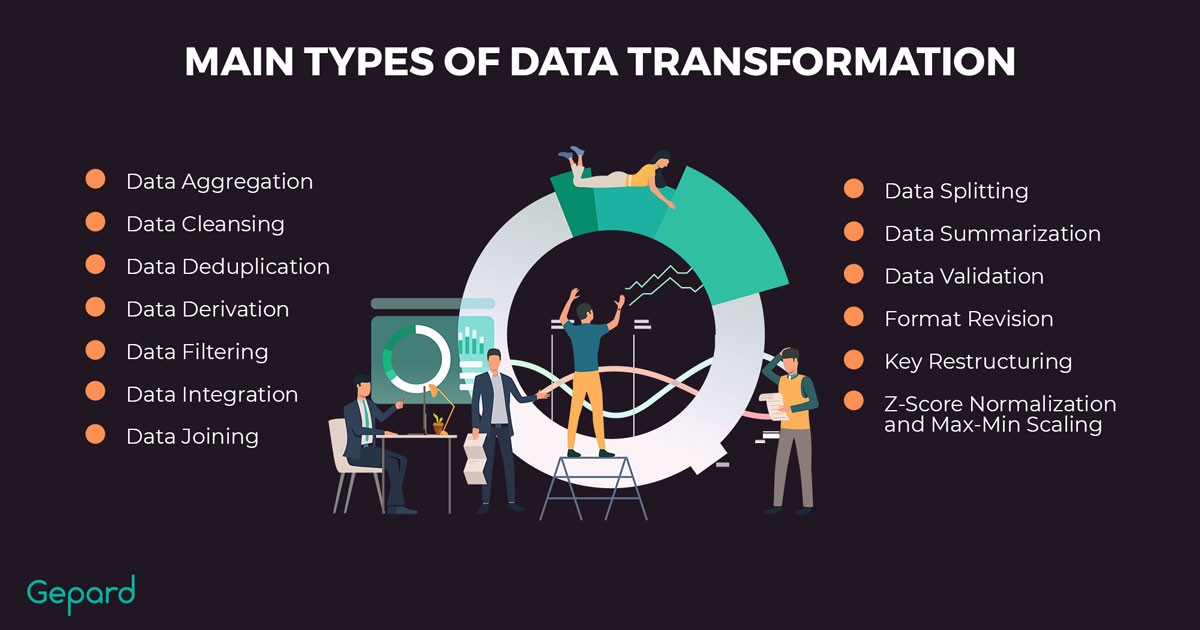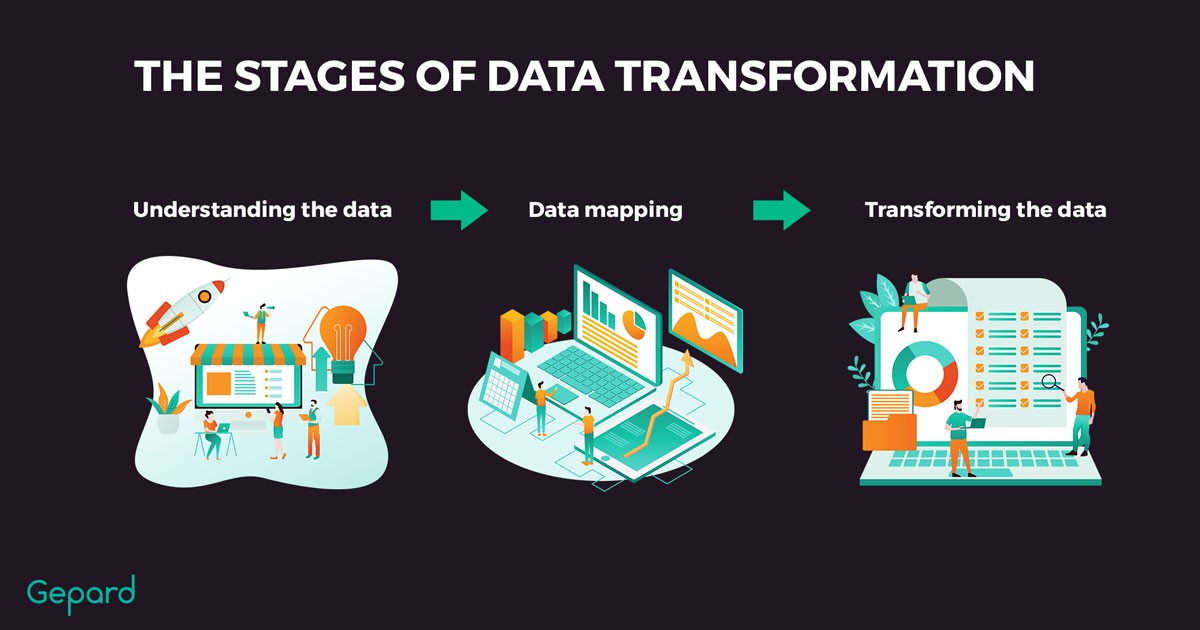Product Data Transformation In A Nutshell
Data transformation is vital for any business that deals with online sales in any shape or form. Research shows that companies that invest in data technologies see a favorable outcome in many business aspects, such as a 40% increase in time to market a product and a 35% growth in customer acquisition. Fortunately, many types of product data transformation software are on the market that make data handling easy and quick.
In the United States alone, it’s projected that in 2022 companies will spend $1.8 trillion on digital transformation technologies, which product data transformation is part of. A great number of businesses resort to automating this process since the emergence of many different retail platforms with their own requirements poses serious challenges. Businesses often find their employees spending long hours trying to meet all the requirements. On top of that, human error is always a factor that causes further delays in successfully getting products on the market.
Let’s take a closer look at data transformation types, stages and ways to make this process as effortless as possible.
What Is Data Transformation?
What Are The Most Common Types Of Data Transformation?
Data Aggregation
This is a process of collecting information from various sources, combining, and making a summarized report, and then delivering it to the end-user for analysis and decision-making.
Data Cleansing
Data cleansing is making a set of data free from inaccurate, invalid, poorly formatted or irrelevant entries. This is especially useful for product data since it has a big human error factor. Cleansing it helps to eliminate this issue and saves a lot of time for businesses.
Data Deduplication
Data deduplication is simply a process of removing duplicate entries from an existing database. In a large data set, an online shop might get many duplicate product contents or customer details, which removing manually can be an expensive task.
Data Derivation
In data derivation, a particular set of data gets prepared from various other sets that are located on different sources. This is achieved with the help of the derivation algorithms. This type of data transformation is used by many businesses that have an extensive scope of information across multiple channels and need to make a decision based on it.

Data Filtering
A large chunk of structured information can often be useless since it’s difficult to go through efficiently. Filtering it by the needed criteria is what helps to customize a report and make it useful for the end user.
Data Integration
This is a process of collecting, for instance, product data from mixed sources and delivering a single group of valuable information. For example, the availability of all product content across multiple outlets can be stored in one place thanks to this method.
Data Joining
With data joining, two different sets of data are combined to appear side by side in any direction needed (left inner, left outer, right inner, etc.) and can conveniently be handled. This type of data transformation is particularly used when a comparison analysis is needed.
Data Splitting
Data splitting is a very basic action of dividing information into subsets to test it. This data transformation technique helps businesses learn about the performance of certain items and helps to predict future outcomes.
Data Summarization
The name speaks for itself in this case. In today’s digital world data gets generated every second, making it extremely difficult to study the results and draw conclusions. Product data transformation software can summarize huge volumes of data, making it easy to understand and quick to comprehend.
Data Validation
Data validation is a method of checking the quality and accuracy of figures that you have. It’s particularly helpful when it comes to complying with product data requirements of different end points.
Format Revision
Integration issues usually arise when there are different formats of information originating from more than one place. Using the right tools helps to revise multiple formats and change them into one.
Key Restructuring
If a particular data set has built-in meaning behind it, like a phone number or an email, changing it in one place and leaving it as it is in another can cause serious issues. By utilizing key restructuring, any changes you make in the original set will get updated in other places.
Z-Score Normalization and Max-Min Scaling
Large product data sets often have various ranges and units. Normalizing the range of independent variables can cause a fundamental error with the whole set. Using a Z-score normalization or max-min scaling approach fixes the data range from 0-1, making it compatible with any system.
What Are The Main Stages Of Data Transformation?

Just like any process that has a large impact on business growth, product data handling comes in stages. Breaking data transformation into logical steps helps decision-makers get a full scope of the market they are operating on and steers them in the right direction.
Understanding + Mapping Data
The first stage is to understand the desired outcome you need and then to map out your data. This means that all of your information from different sets needs to be matched. Suppose there are two separate datasheets: in one, the country name is written as USA, and in the other, it’s United States of America. Mapping tools help in bridging the gap between these differences.
Transforming Data
In this stage, you can begin the actual process of converting one file format to another. There are two primary types of doing transformation: the manual way and the automatic one. Many businesses use hassle-free standardized product data transformation tools that are automated.
How To Transform Product Data
As you can imagine by now, transforming product data is an extremely difficult one and requires extensive knowledge and experience. Fortunately, many ETL (Extract, Transform, Load) platforms are available that help companies with this and make it a lot simpler.
ETL platforms are designed in accordance with the fundamental principles of handling data. As the name suggests, the mechanics behind most ETL systems work in three stages.
The initial stage is the extraction of both structured and unstructured data from multiple sources and combining it into a joint repository. Once that is performed, the second stage, which is the most critical one, is transforming the data so it aligns with all of the requirements of the platform it will be loaded to.
Prior to the transformation stage, it’s possible to set different rules in the system that help it understand what compatible outcome is needed. The last stage an ETL software performs is the process of loading the ready-to-use data into a new destination.

Gepard PIM is one example of a tool that helps with the transformation of product data in a structured and centralized manner, leading to improved data quality and elevated accuracy. The product information management tool does this by implementing three main data transformation components, such as standardization, validation and syndication.
Gepard data validation module ensures the following types of data compliance:
1. Attributes range check
Check if the attribute value complies with a certain range.
2. Values list validation
Ensure that the feature identifier has the list of allowed values.
3. Field type and input validation
Avoid “invalid format” errors and verify the data compliance with the requirements.
4. Required fields and attributes check
Create a generated report on the missed data fields.
5. Product data import check
Connect the incoming data to the appropriate existing product, to make sure there are no data duplicates.
Additionally, this allows your team to focus on more important goals rather than spending hours managing numerous spreadsheets.
Why Transform Product Data?
Every brand, from small to large, needs to manage huge volumes of data on a daily basis. Keeping all the information linked, updated and error-free is simply not possible when done manually. On top of that, businesses need to make sure that they are following each marketplace’s requirements and standards regarding product data.
This is exactly the reason why conducting data transformation with software that is designed for this is a necessary step in order to comply with all of the requirements that each platform has.
How Can Product Data Be Transformed?
To scale their business, online retailers can benefit from the many techniques of data handling listed above. For example, with the help of data cleansing, you can execute the stage where the product content gets mapped, modified, filtered and aggregated.
With the help of data validation, you can check the clarity of the information that you have extracted and will be uploading to a sales channel. If you have an in-house programmer with the relevant knowledge, the validation can be done via custom code written with commands that are executed. But the faster route would be using software that is developed exactly for validation and making your workflow trouble-free.
Remove The Trouble Of Product Data Transformation
By using a solution that Gepard provides, your business can transform product data efficiently all while properly enriching it, mapping it and validating it so it is prepared to be loaded practically to all marketplaces.
Furthermore, by using Gepard PIM, you can increase sales and put your product out on the market faster and in a more efficient manner.
If you want to learn more about how we can help your business scale with the help of our tools, request your personalized demo today and one of our specialists will reach out to you in no time.


